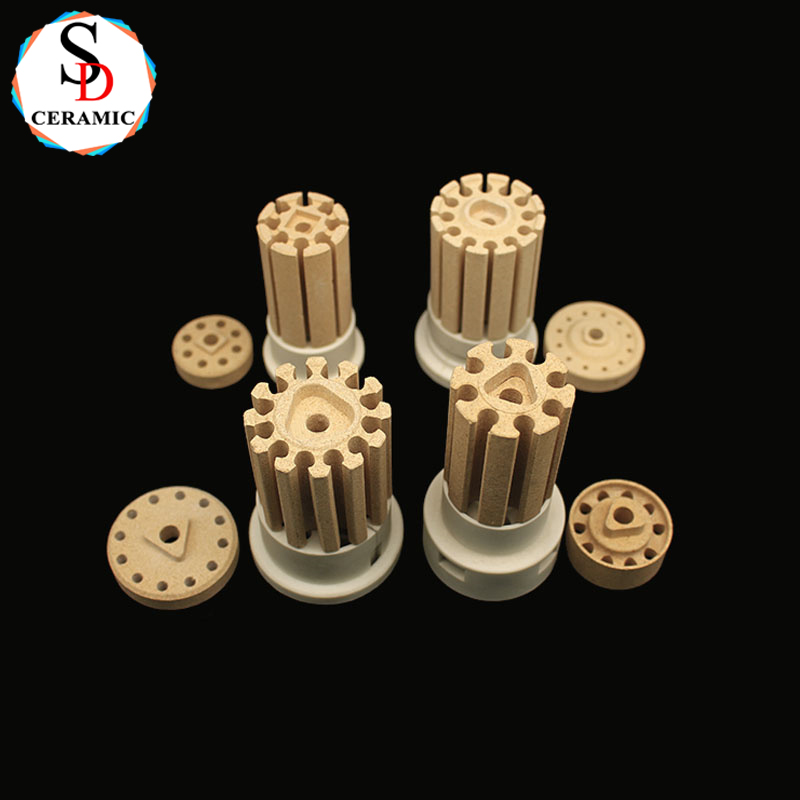What is intermediate ceramic?
Intermediate ceramics are a type of high-performance ceramic material that falls between traditional ceramics and advanced ceramics. They are composed of inorganic, non-metallic compounds such as oxides, nitrides, or carbides, and possess unique microstructures and excellent comprehensive properties. They not only retain the high temperature and corrosion resistance characteristics of traditional ceramics, but also have high strength, high hardness, and functional adjustability close to advanced ceramics, thus demonstrating great potential in industrial applications.
Why use intermediate ceramics?
Intermediate ceramics, due to their unique composition and structure, can balance performance and cost, filling the application gap between traditional ceramics and advanced ceramics. They not only have high mechanical strength and chemical stability, but can also optimize their thermal, electrical, or mechanical properties by adjusting their formulations and processes, making them play an important role in fields such as electronics, chemical engineering, energy, and machinery.
Basic characteristics of intermediate ceramics:
1. Higher hardness and wear resistance
The hardness of intermediate ceramics is between traditional ceramics and advanced ceramics, but still significantly higher than most metal materials, making them suitable for wear-resistant components such as bearings, seals, and cutting tools.
2. Good compressive strength
Although not as extreme as some advanced ceramics such as zirconia or silicon carbide, intermediate ceramics can still withstand high mechanical loads and are suitable for structural support and pressure resistant environments.
3. Moderate density
The density of intermediate ceramics is usually lower than that of metals, but may be slightly higher than some lightweight advanced ceramics, which gives them an advantage in applications that require weight reduction but still require strength.
4. Excellent high temperature resistance performance
Intermediate ceramics can work stably at high temperatures ranging from 800 ° C to 1400 ° C, making them suitable for thermal equipment, furnaces, and high-temperature sensors.
5. Adjustable electrical performance
Some intermediate ceramics have excellent insulation properties and are suitable for electronic packaging and circuit substrates; And others can adjust conductivity through doping for use in sensors or functional devices.
6. Chemical stability and corrosion resistance
Similar to advanced ceramics, intermediate ceramics have excellent resistance to acid, alkali, and oxidative environments, making them suitable for chemical equipment and corrosive media treatment.
|
|
Limitations of intermediate ceramics:
1. High processing difficulty
Due to its high hardness, intermediate ceramics usually require precision grinding after sintering, which increases manufacturing costs. However, some intermediate ceramics (such as certain silicate based ceramics) can improve processability by optimizing the formulation.
2. High brittleness
Similar to traditional ceramics, intermediate ceramics have lower fracture toughness and are prone to brittle fracture when subjected to impact or stress concentration. Therefore, stress distribution and impact resistant structures need to be considered in design.
3. The performance is significantly affected by the process
The final performance of intermediate ceramics is highly dependent on the purity of raw materials and sintering processes, and small process changes may lead to performance fluctuations, so strict control of production conditions is required.
The application prospects of intermediate ceramics
Intermediate ceramics are gradually being applied to:
1. Industrial Machinery: Wear resistant liners, cutting tools, sealing rings
2. Electronic components: insulating substrates, sensors, dielectric materials
3. Energy and Environmental Protection: High Temperature Filtration Membrane, Catalyst Carrier
4. Biomedical: low-cost dental restorative materials, biomimetic bone substitutes
With the advancement of materials science, intermediate ceramics are expected to replace metals and polymers in more fields, promoting innovation in industrial technology.

If you have any questions or need help, feel free to contact with our team.
Phone
+86 183 5248 9056
Location
Qianluo Village, Dingshu Town, Yixing City, Jiangsu Province, China
Welcome to subscribe to our email message!


Copyright © Yixing Shengda Refractory Ceramic Co., Ltd. All Rights Reserved | Sitemap | Powered By 